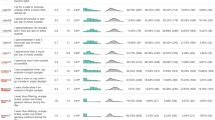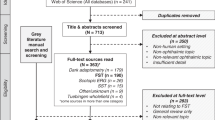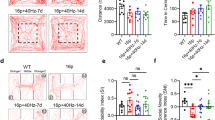Abstract
IN a series of experiments in which the effects of centrally acting drugs on the adaptation of the critical flicker frequency (CFF) to intermittent light of varying frequency was investigated, a consistent placebo effect was noted, namely a fall in mean CFF1–3. This had not been described by other workers investigating the effects of drugs and placebo on mean CFF alone, and it was therefore possibly due to the method used. The method used involved exposing subjects for periods of 1 min to an intermittent light of 25 or 50 c/s, before measuring ascending and descending thresholds of CFF3. To investigate this further, the CFF was measured in six subjects at 0, 1.5 and 3 h on 3 consecutive days, beginning at 9 a.m., about 1.5 h after a light breakfast. The subjects abstained from tea, coffee and smoking during the experimental period. On one day, ascending and descending thresholds were measured without previous adaptation, while on the others, subjects were exposed for 1 min to intermittent light at 25 or 50 c/s before the thresholds were measured. The method of measurement was the same as that previously described3 except that the light source was viewed through an artificial pupil 2 mm in diameter and was placed at the focal point of a lens which delivered parallel light to the eye. This procedure eliminated any effect of changes in pupil size of the subject. An interval of 1 min elapsed between each determination.
This is a preview of subscription content, access via your institution
Access options
Subscribe to this journal
Receive 51 print issues and online access
$199.00 per year
only $3.90 per issue
Buy this article
- Purchase on SpringerLink
- Instant access to full article PDF
Prices may be subject to local taxes which are calculated during checkout
Similar content being viewed by others
References
Turner, P., thesis, Univ. London (1965).
Turner, P., J. Pharm. Pharmacol., 17, 388 (1965).
Smart, J. V., and Turner, P., Brit. J. Pharmacol., 26, 468 (1966).
Turner, P., J. Physiol., 171, 6P (1964).
Turner, P., Patterson, D. S., and Smart, J. V., Nature, 209, 813 (1966).
Author information
Authors and Affiliations
Rights and permissions
About this article
Cite this article
TURNER, P., SNEDDON, J. & SMART, J. Fall in Critical Flicker Frequency associated with Adaptation to Intermittent Light. Nature 214, 947 (1967). https://doi.org/10.1038/214947a0
Issue date:
DOI: https://doi.org/10.1038/214947a0
This article is cited by
-
Difference in the central actions of phenytoin and phenobarbitone in man, measured by critical flicker fusion threshold
European Journal of Clinical Pharmacology (1973)



